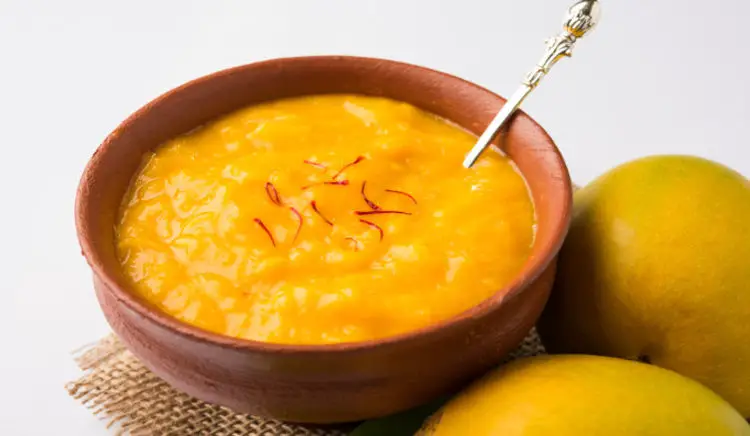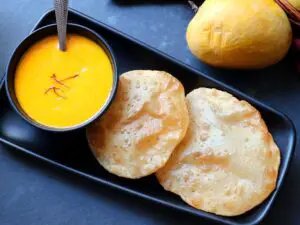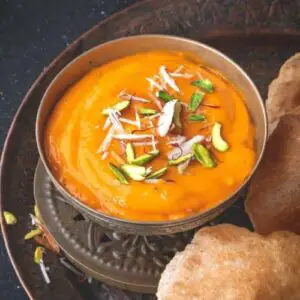Aamras is a traditional Indian dessert made from ripe mangoes. It is a popular dish in the Indian subcontinent, especially during the summer months. Aamras is a sweet and creamy dish that is often served with pooris or rotis. It can also be used as a topping for ice cream, pancakes, or waffles.
Aamras is a very versatile dish and can be made with different types of mangoes. Alphonso mangoes are the most popular type of mango used to make aamras, but other types of mangoes, such as Kesar mangoes, can also be used.
Here is a recipe for Aamras, a delicious and refreshing Indian mango dessert.
About
Aamras is a traditional Indian dessert made from ripe mangoes. It is a popular dish in the Indian subcontinent, especially during the summer months. This recipe is a sweet and creamy dish that is often served with pooris or rotis. It can also be used as a topping for ice cream, pancakes, or waffles.
It is a very versatile dish and can be made with different types of mangoes. Alphonso mangoes are the most popular type of mango used in this recipe, but other types of mangoes, such as Kesar mangoes, can also be used.
To make aamras, the mangoes are first peeled and then the flesh is removed from the pits. The flesh is then mashed or blended until it is smooth. Milk and sugar are then added to the mango puree and the mixture is cooked until it is thickened. It can be flavored with cardamom, saffron, or other spices.
Aamras is a delicious and refreshing dessert that is perfect for a hot summer day. It is also a very easy dish to make, and can be made with just a few simple ingredients.
Ingredients:
- 2 to 3 ripe mangoes
- 2 tablespoons sugar (adjust to taste)
- 1/4 teaspoon cardamom powder
- A pinch of saffron strands (optional)
- 1/4 cup milk (optional, to adjust consistency)
Instructions:
- Choose ripe mangoes that are sweet and fragrant. You can use varieties like Alphonso, Kesar, or any other juicy mangoes.
- Wash the mangoes thoroughly, then peel and remove the flesh from the mangoes. Make sure to remove any fibrous threads.
- Place the mango flesh in a blender or mixer jar.
- Add sugar, cardamom powder, and saffron strands (if using) to the blender.
- Blend everything together until you get a smooth puree. If the mixture seems too thick, you can add a little milk to adjust the consistency.
- Taste and add more sugar if desired. You can also adjust the cardamom powder according to your preference.
- Once it is blended to a smooth consistency, transfer it to a serving bowl.
- You can serve immediately, or you can refrigerate them for a few hours to chill it before serving.
- Aamras tastes best when it is served chilled. You can garnish it with a few saffron strands or chopped nuts if you like.
Tips:
- Use ripe mangoes. Ripe mangoes are sweeter and have a smoother texture.
- Peel the mangoes carefully. The skin of the mango can be bitter, so it is important to peel it carefully.
- Mash or blend the mangoes until they are smooth. The mangoes should be smooth enough to pass through a fine-mesh strainer.
- Add milk and sugar to taste. The amount of milk and sugar that you add will depend on your personal preference.
- Cook the Aamras until it is thickened. The consistency should be thick enough to coat the back of a spoon.
- Aamras is typically served chilled.
variation
- Cardamom and Pistachios: Add a pinch of crushed cardamom seeds and garnish the aamras with chopped pistachios for a flavorful and nutty twist.
- Mango Pulp: To intensify the mango flavor, you can add a few tablespoons of canned mango pulp to the fresh mangoes while blending.
- Coconut: Blend some fresh coconut or add coconut milk to the aamras for a tropical twist.
- Yogurt: For a tangy and creamy variation, you can mix some yogurt or thick Greek yogurt into the blended mango puree.
- Mint: Add a handful of fresh mint leaves while blending the mangoes to infuse a refreshing minty flavor.
Here are some additional facts about Aamras:
- Aamras is believed to have originated in the Indian state of Gujarat. it is a popular dish in many Indian states, including Gujarat, Maharashtra, Rajasthan, and Uttar Pradesh.
- Aamras is often served as a dessert or a snack. it can also be used as a topping for ice cream, pancakes, or waffles.
- Aamras is a very versatile dish and can be made with different types of mangoes.
- Alphonso mangoes are the most popular type of mango used, but other types of mangoes, such as Kesar mangoes, can also be used.
FAQs
- What type of mangoes is best?
Ripe and sweet mango varieties like Alphonso, Kesar, Totapuri, or Banganapalli are commonly used to make aamras. These mangoes have a rich and intense flavor that enhances the taste of the dessert.
- Can I make aamras without adding sugar?
If you have naturally sweet mangoes, you may not need to add sugar. However, if the mangoes are not very sweet, you can adjust the sweetness by adding honey, jaggery, or any other sweetener of your choice.
- Can I use canned mango pulp?
While fresh mangoes are preferred for aamras, you can use canned mango pulp as a convenient alternative. Just ensure that the pulp is of good quality and doesn’t contain any added sugar or preservatives.
- Can I make aamras with unripe mangoes?
Aamras is typically made with ripe mangoes as they provide a sweet and luscious flavor. Using unripe mangoes may result in a sour taste and a different texture. It’s best to use fully ripe mangoes for the authentic aamras experience.
Q: What are some health benefits of Aamras?
A: Aamras is a good source of vitamins A and C. It is also a good source of potassium. Aamras can help to boost the immune system, improve digestion, and protect against heart disease.
Nutrition
Nutrient1 cup (240 g)
Calories 179
Total Fat 1.2 g
Saturated Fat 0.1 g
Polyunsaturated Fat 0.2 g
Monounsaturated Fat 0.3 g
Cholesterol 0 mg
Sodium 2.6 mg
Total Carbohydrates 41 g
Dietary Fiber 4 g
Sugar 38 g
Protein 2 g
You Might Also Like:
- Oreo Mug Cake Recipe
- Methi Matar Malai recipe
- How to make chenna
- Handi Paneer Recipe
- ‘Black Lentils Recipe
- Til laddu recipe (til ke laddu)
follow us on instagram, facebook and youtube



